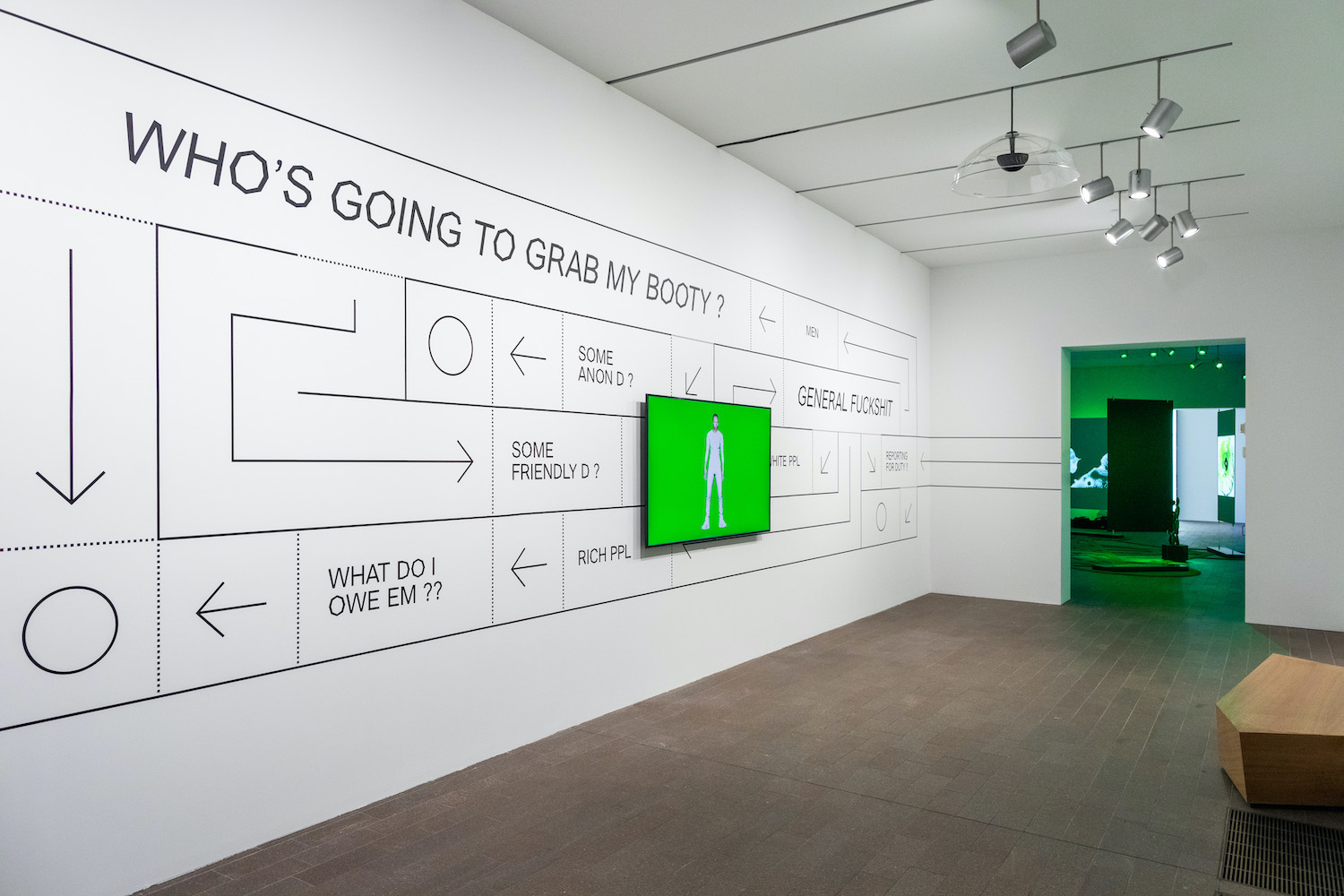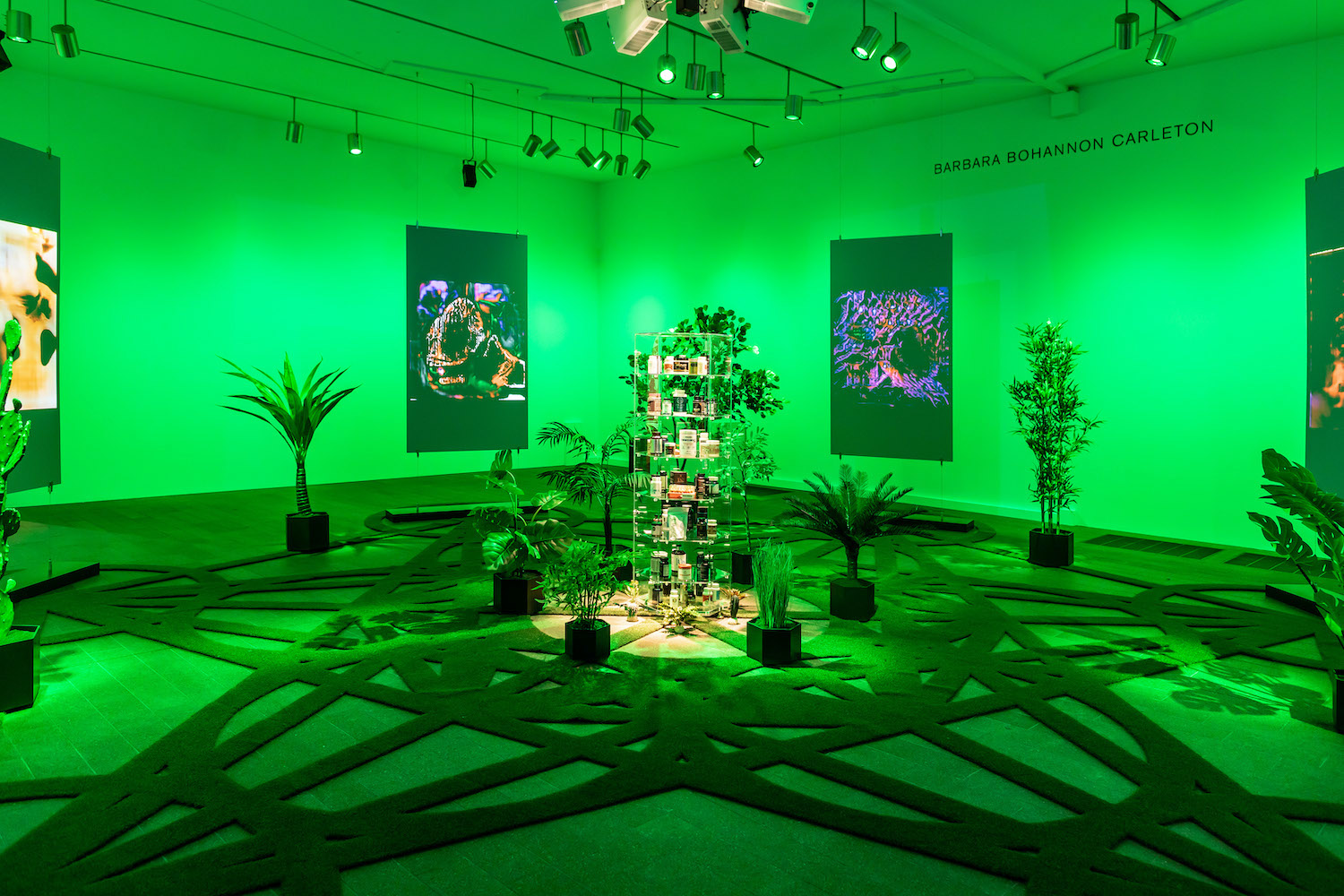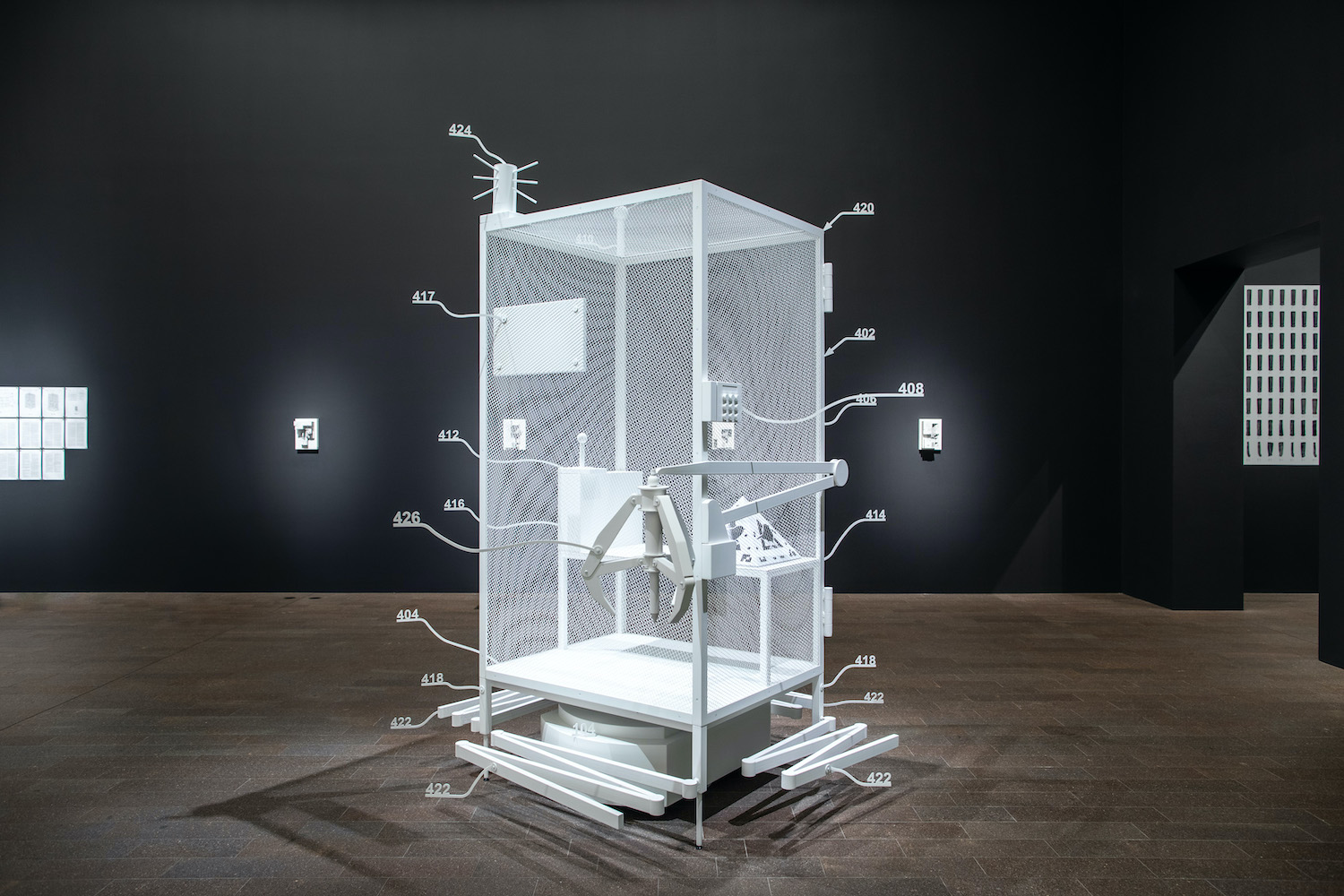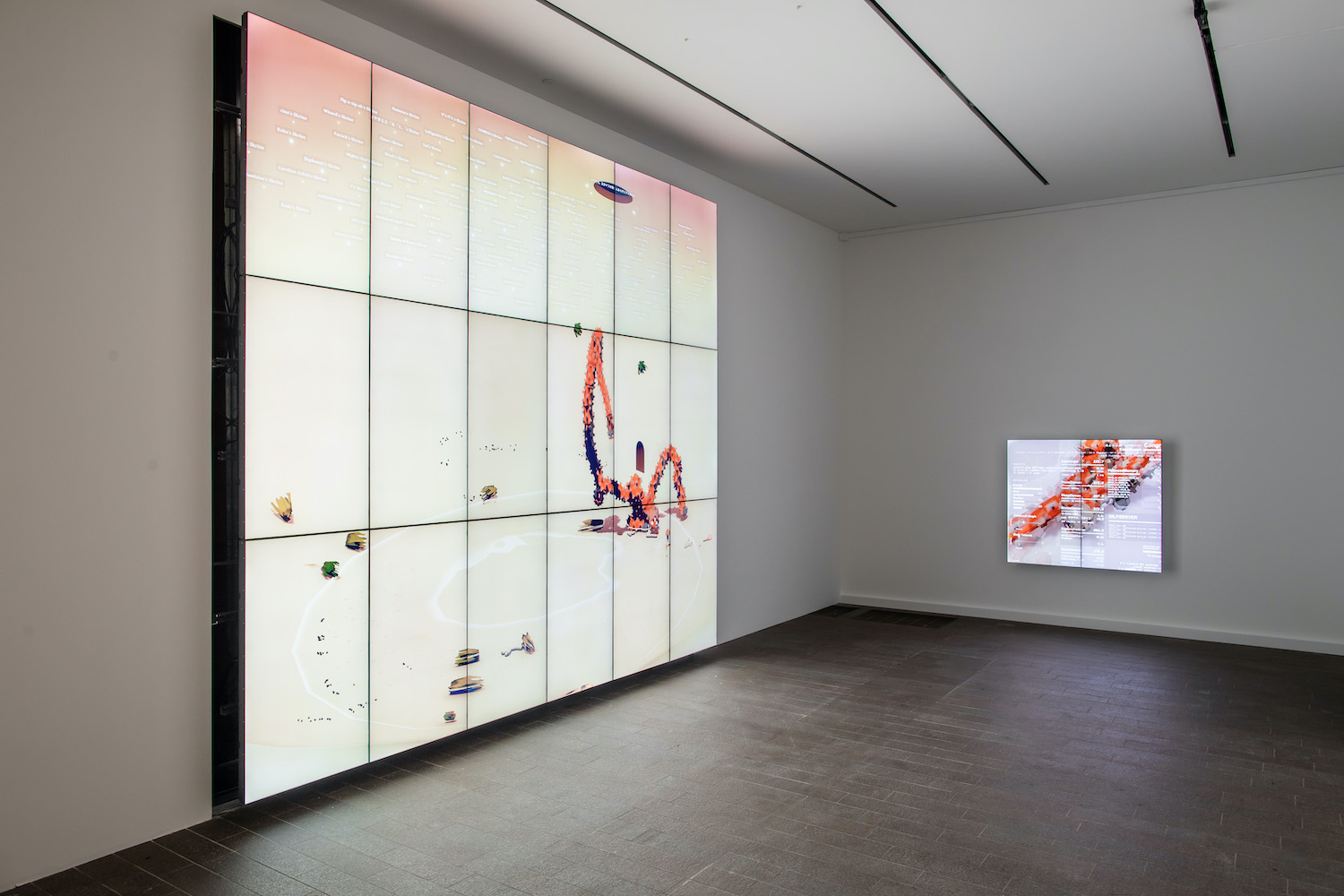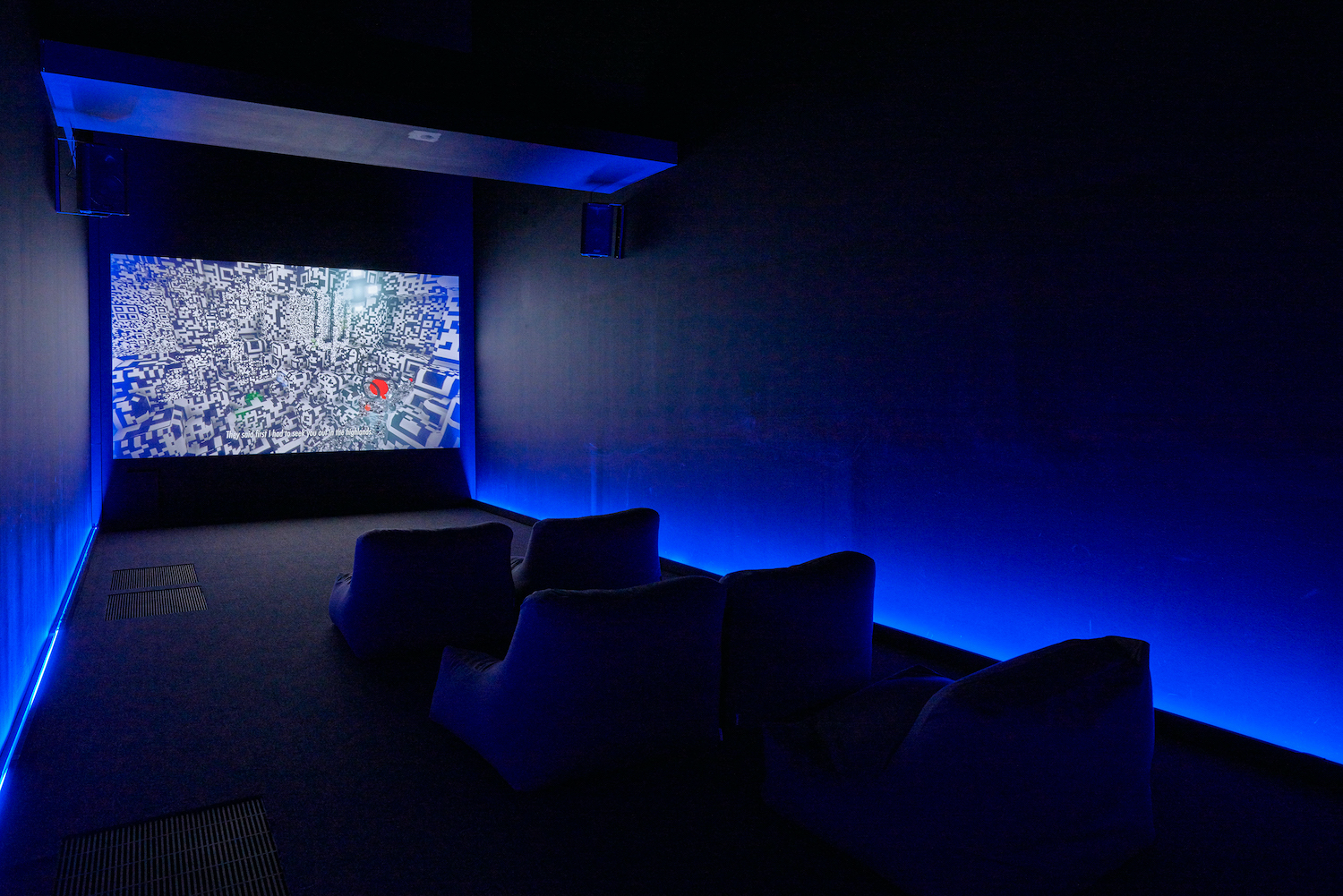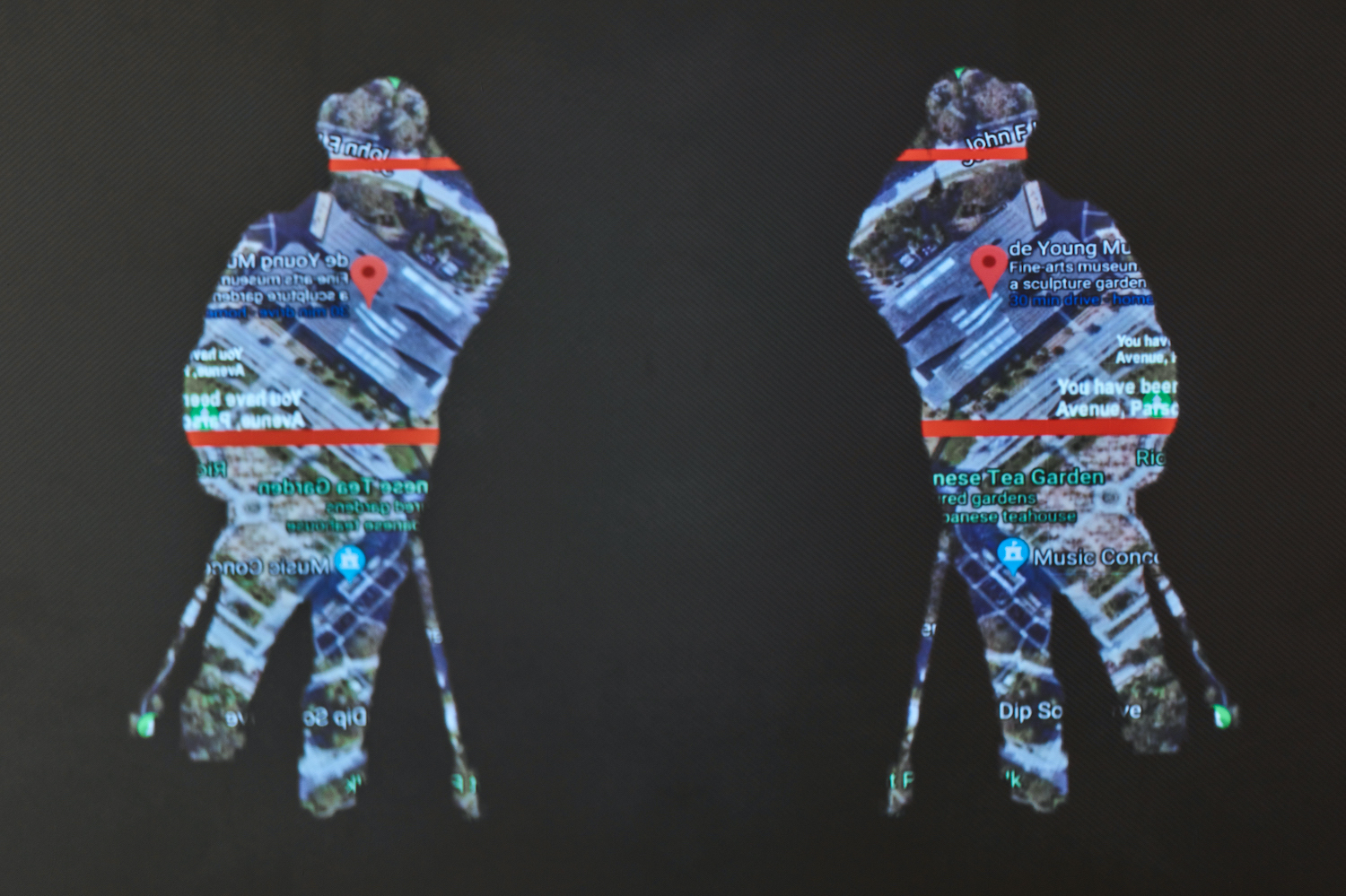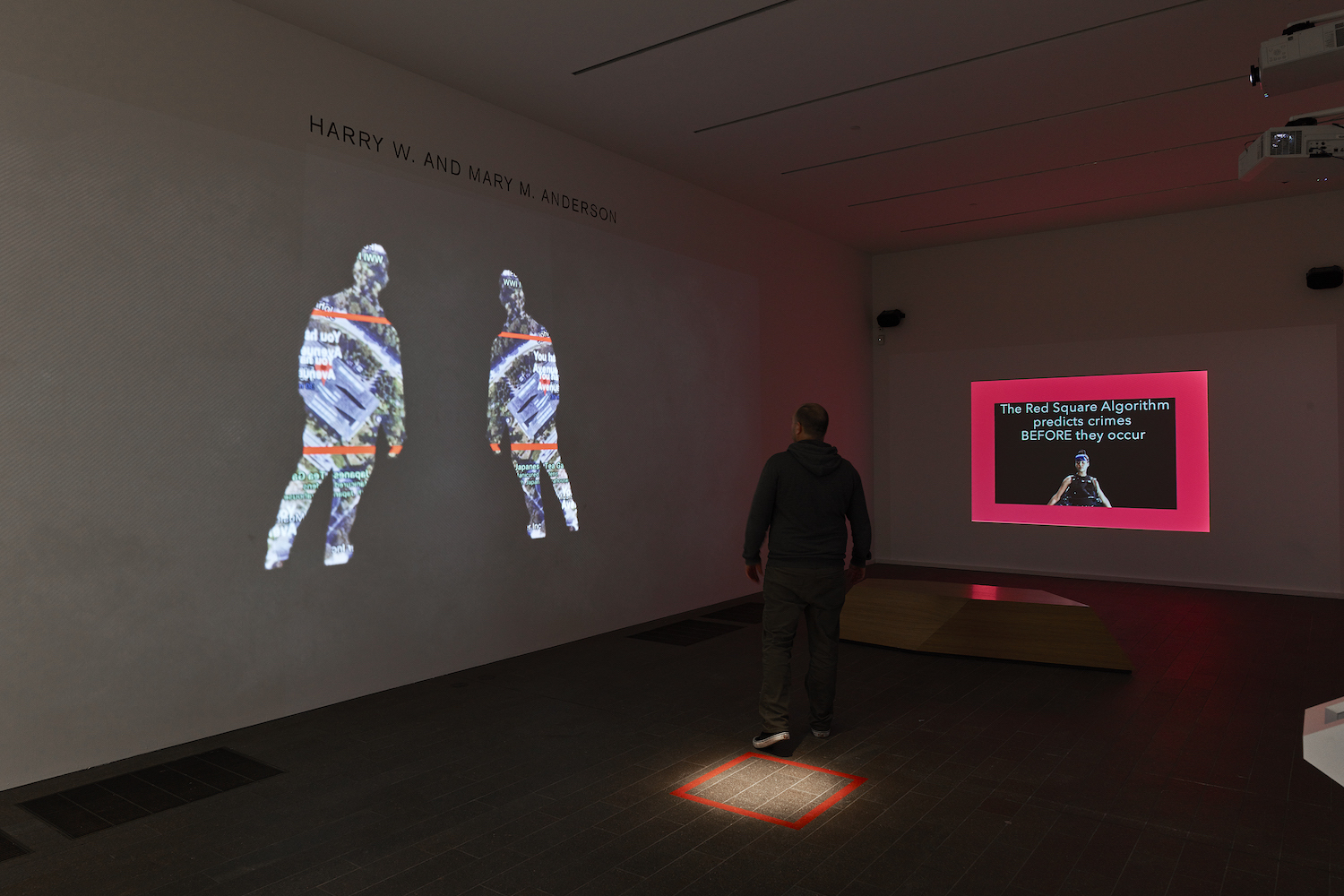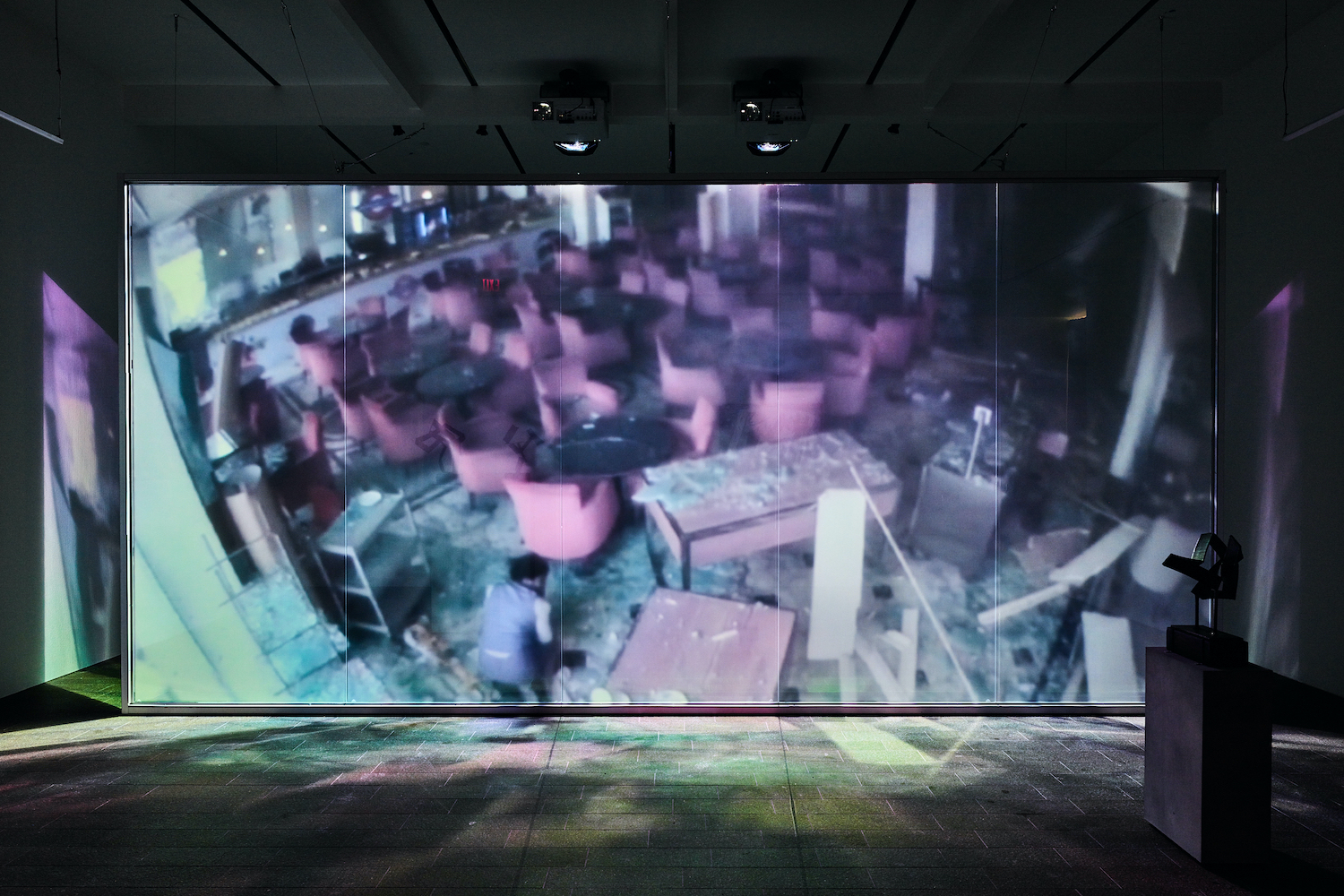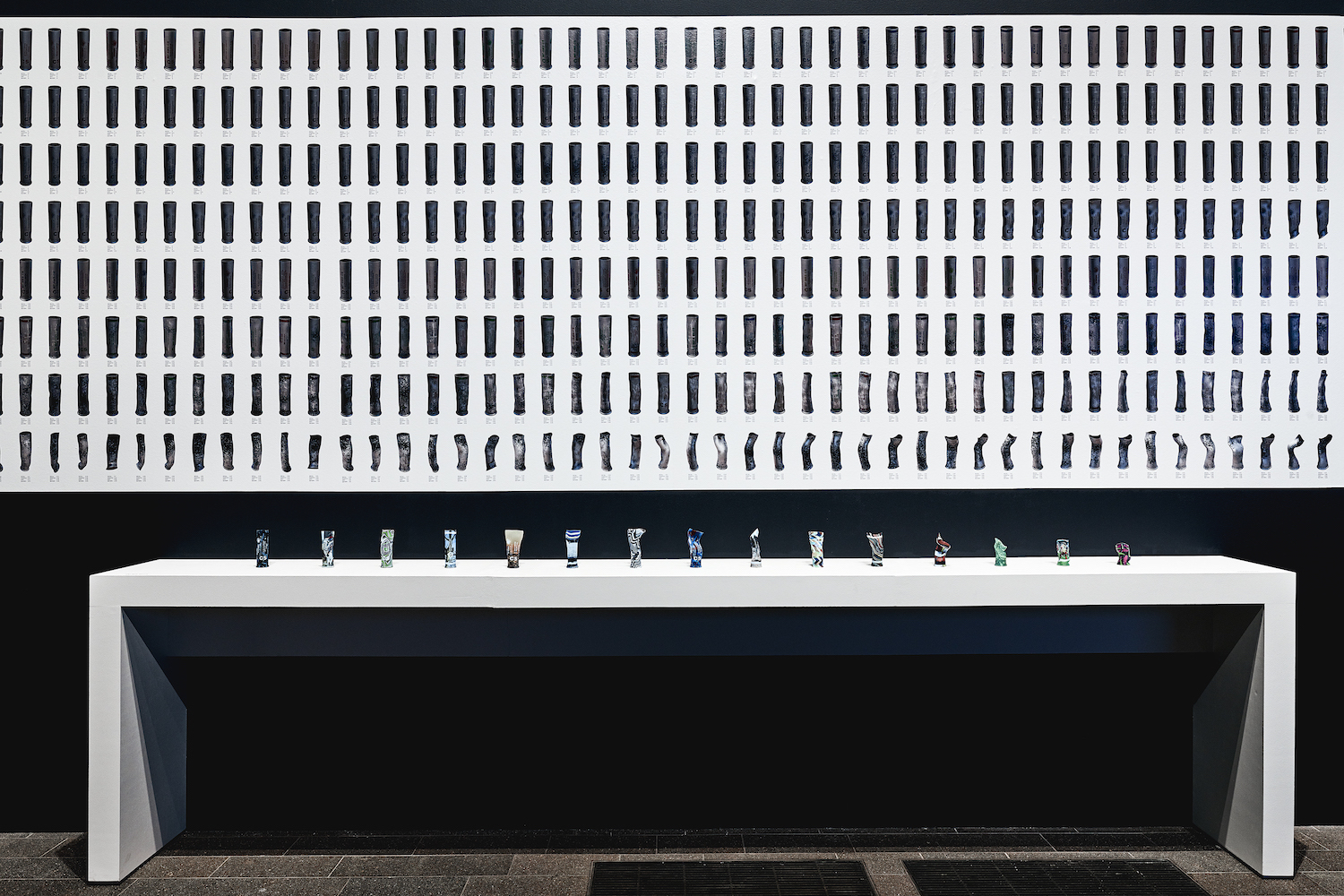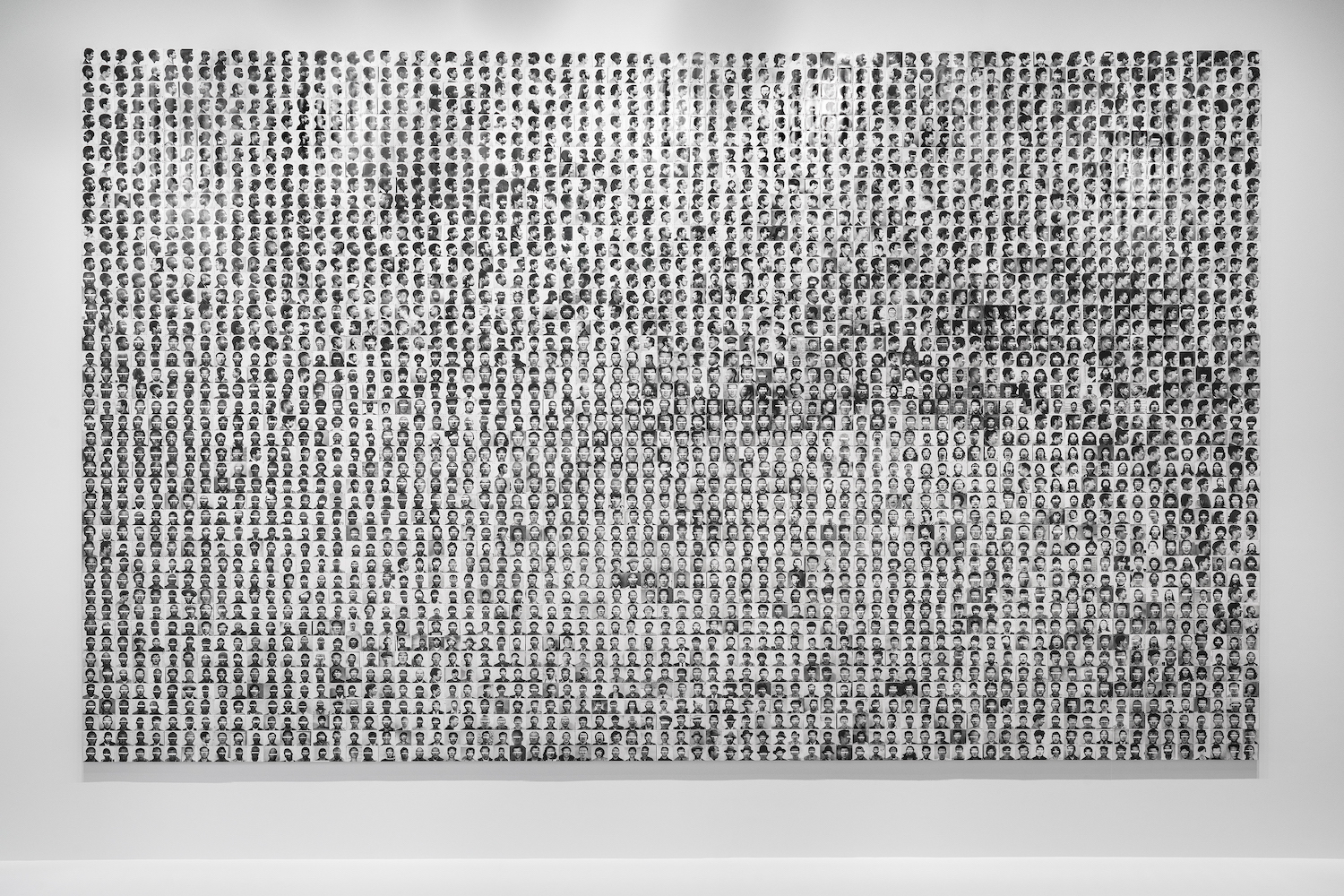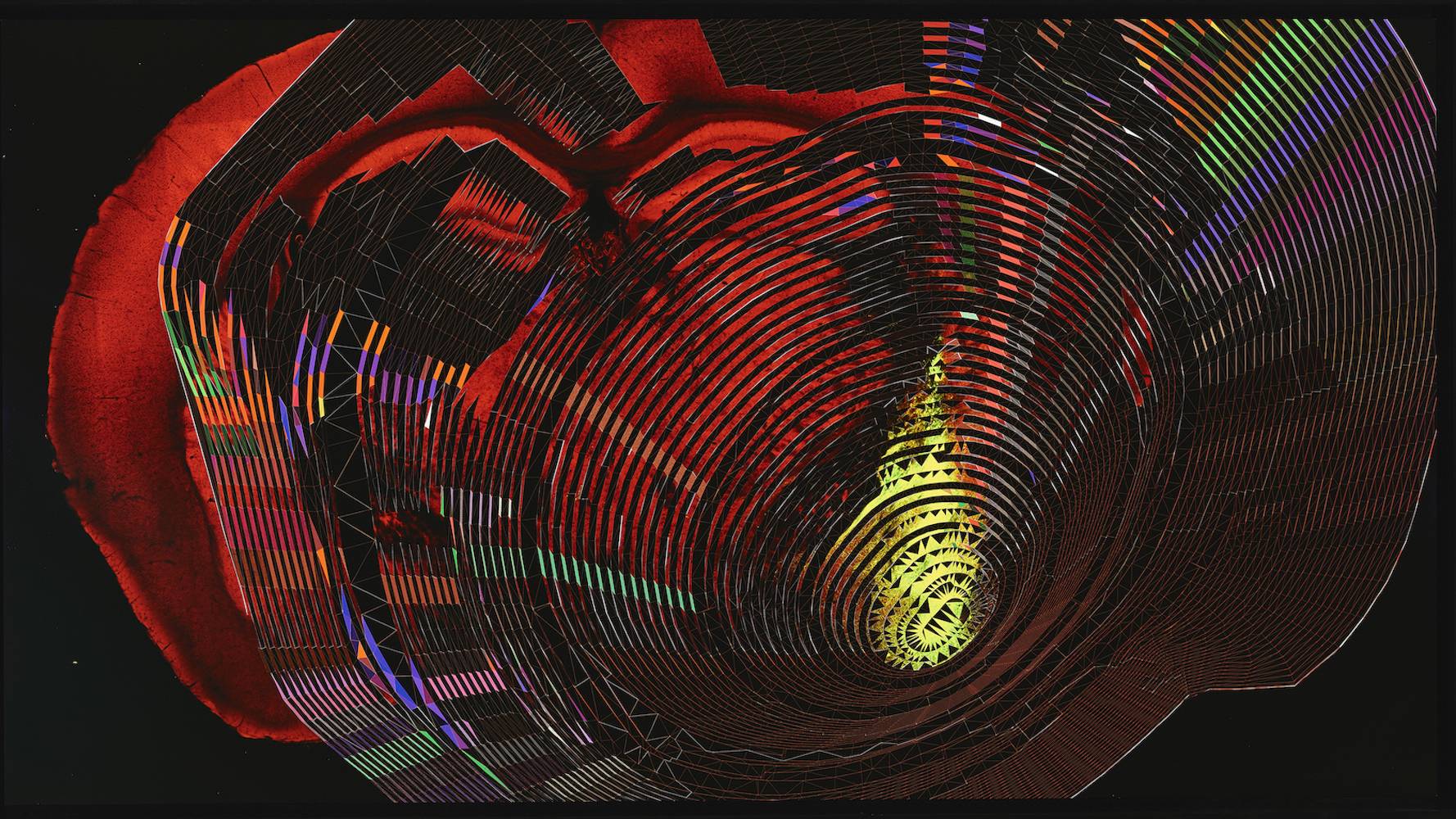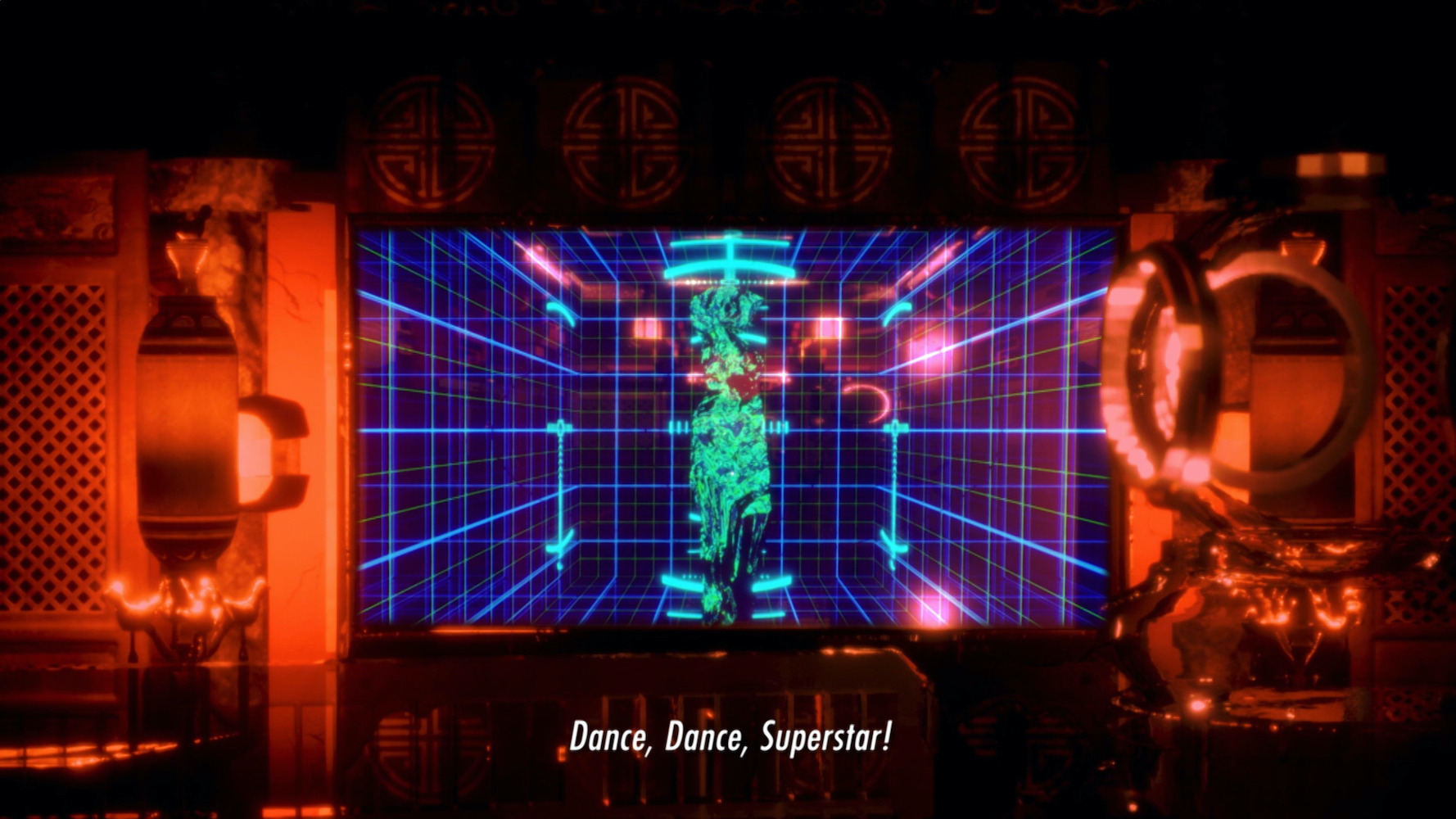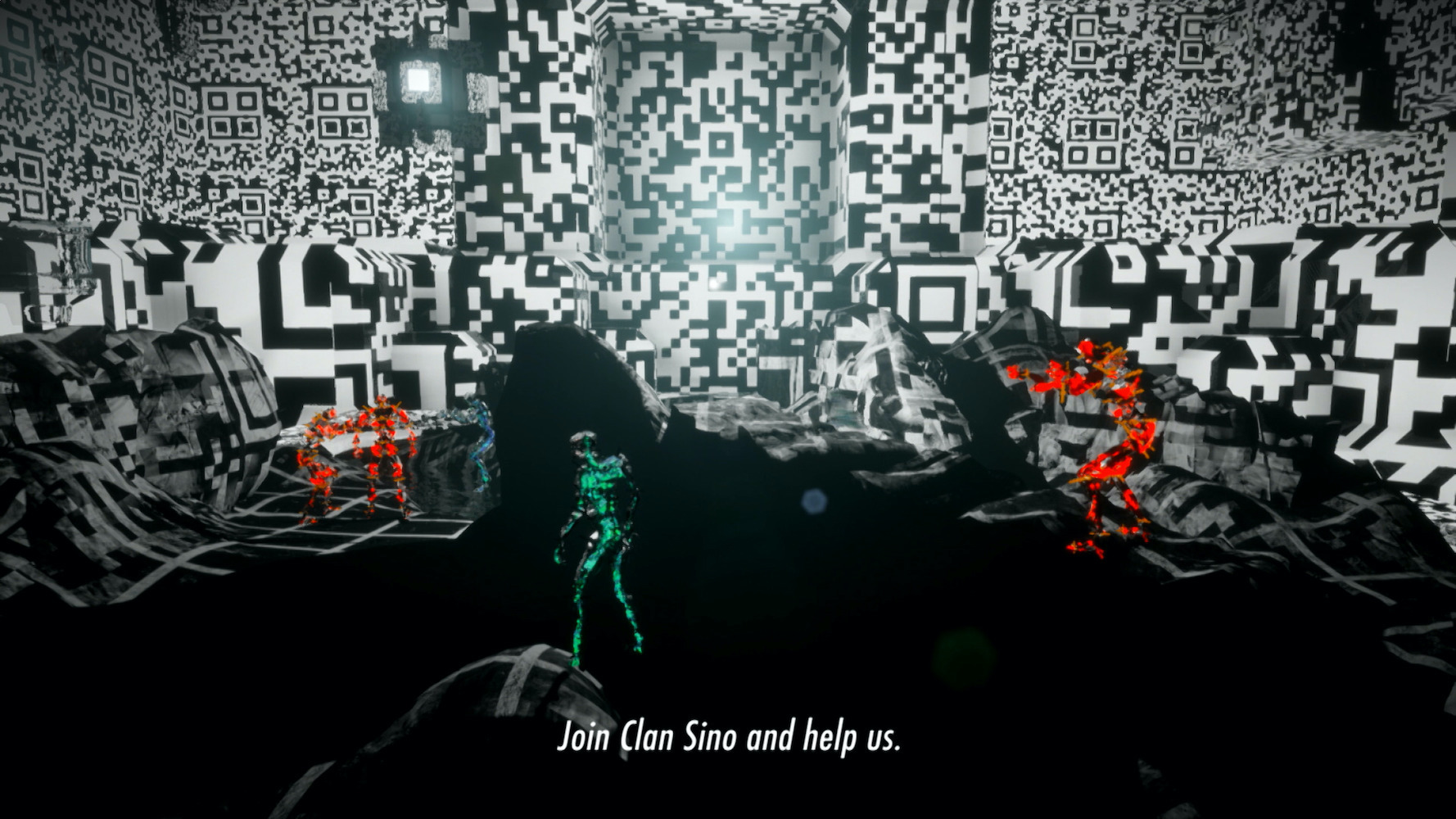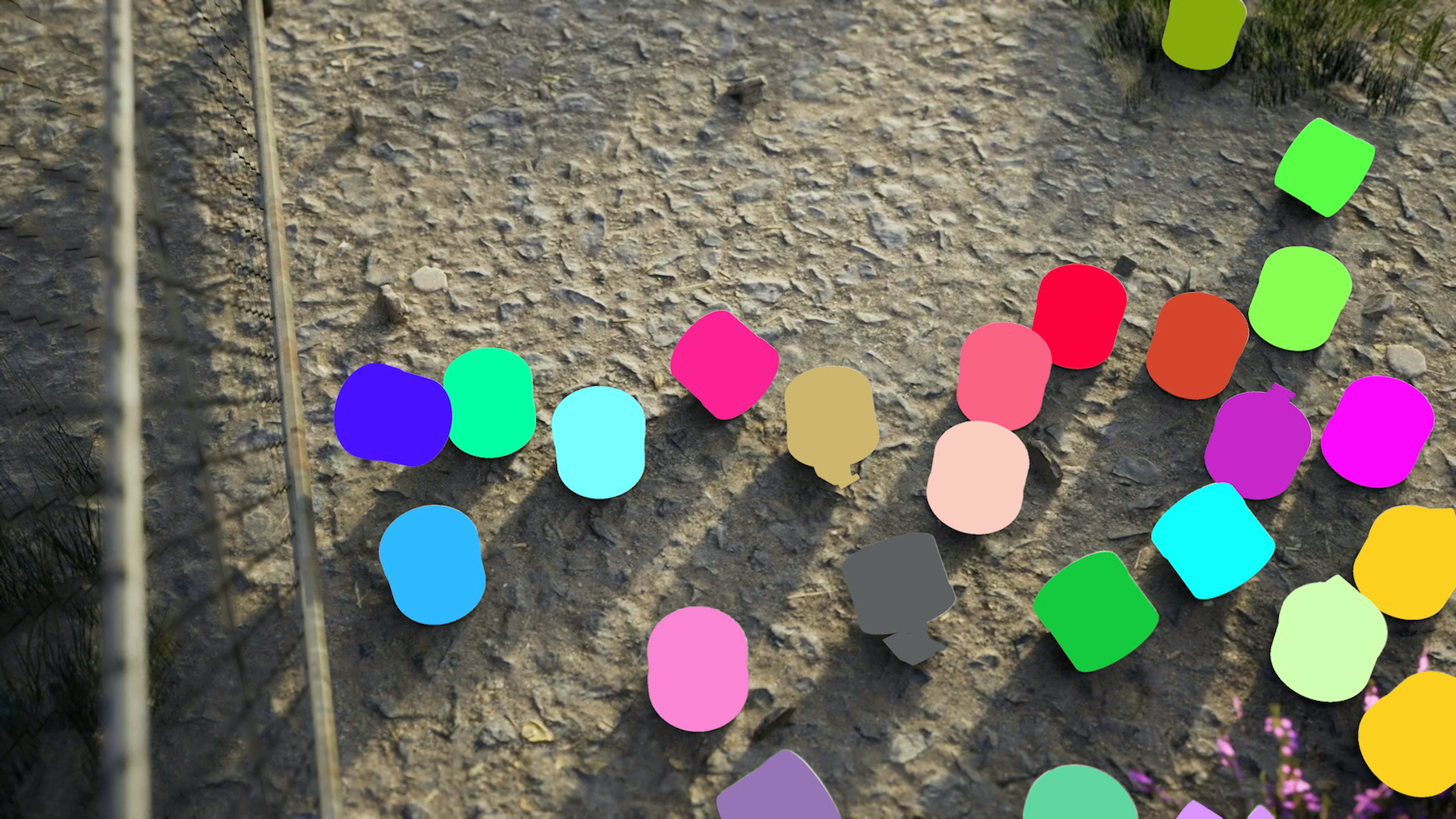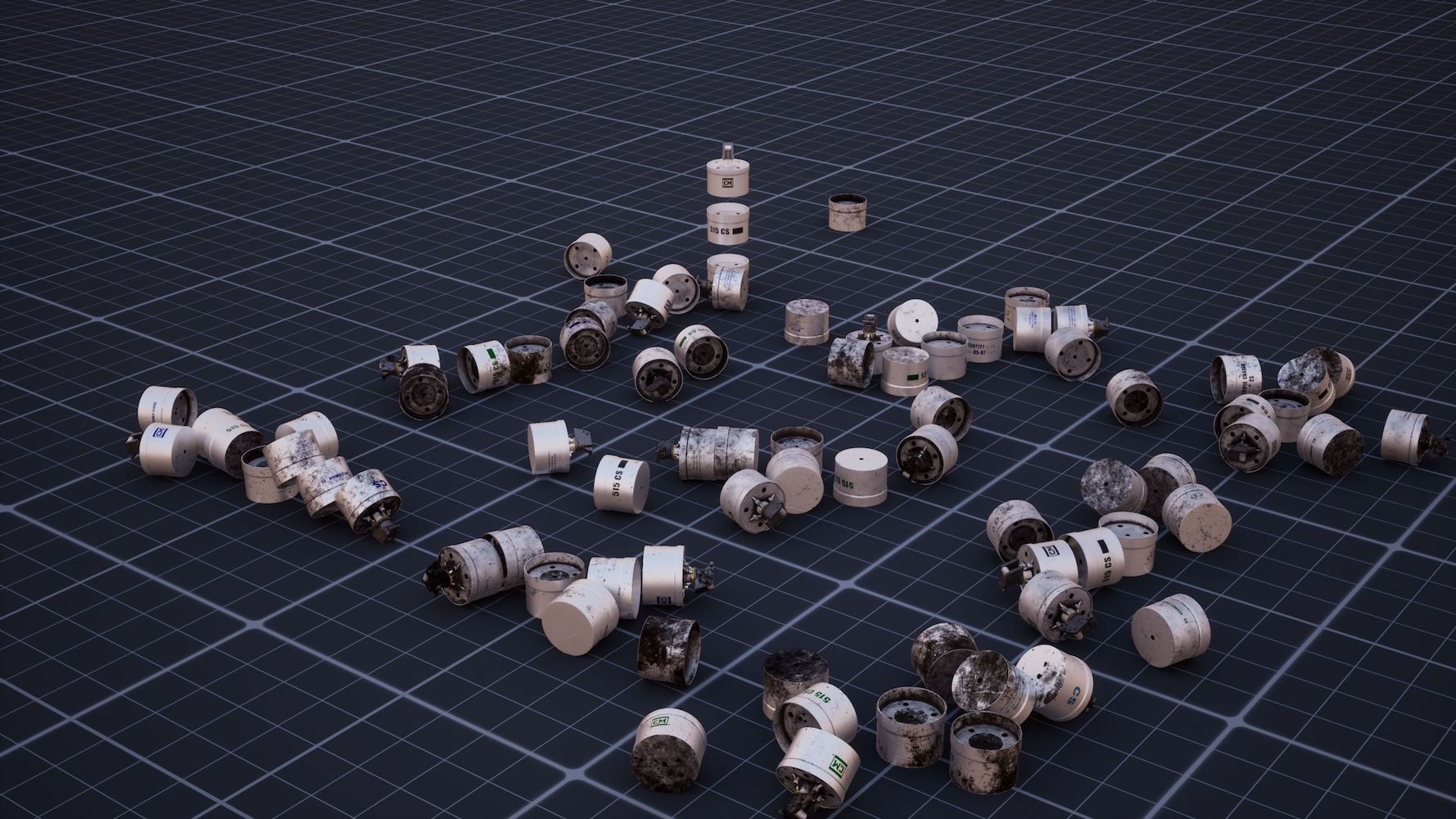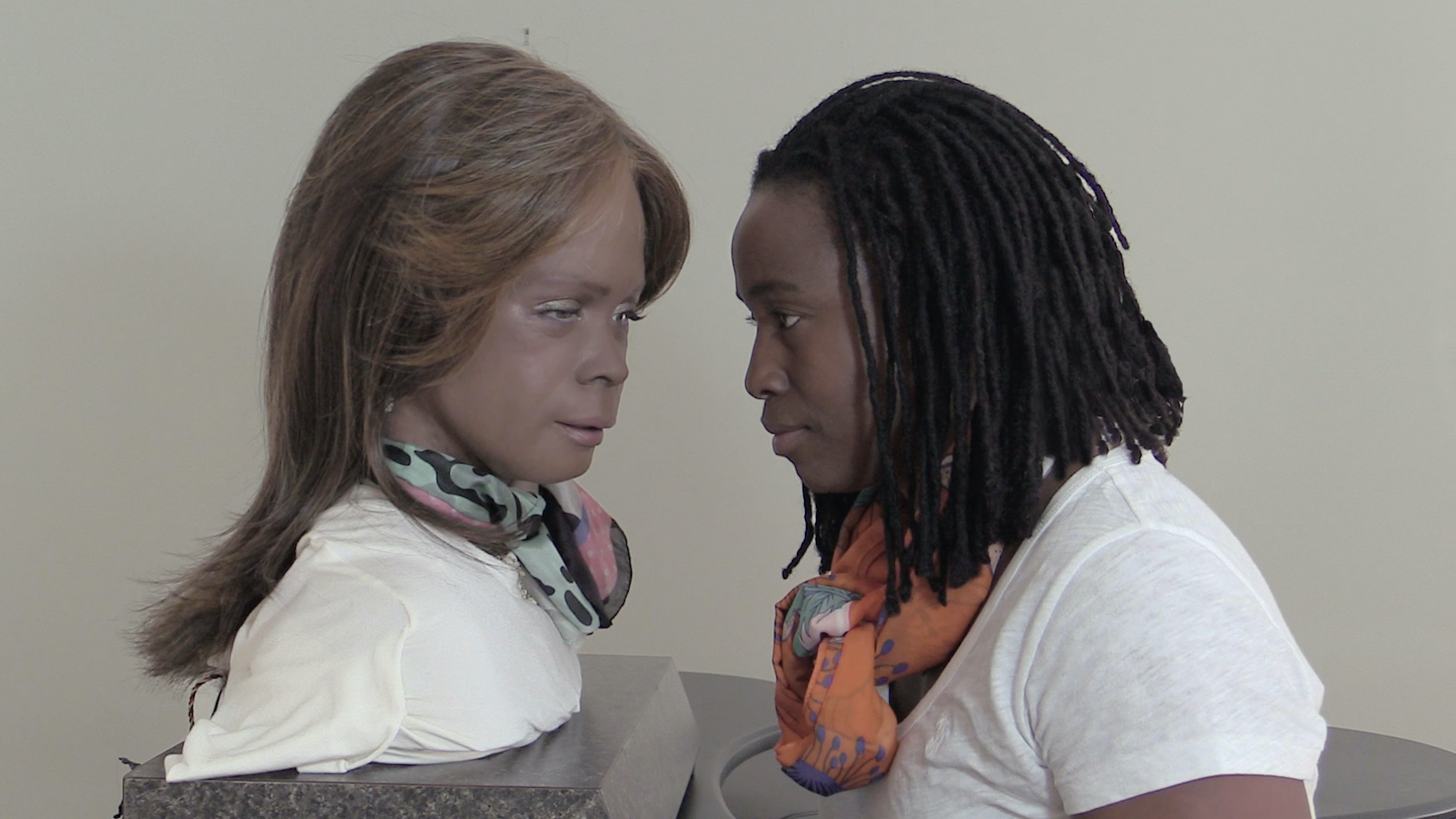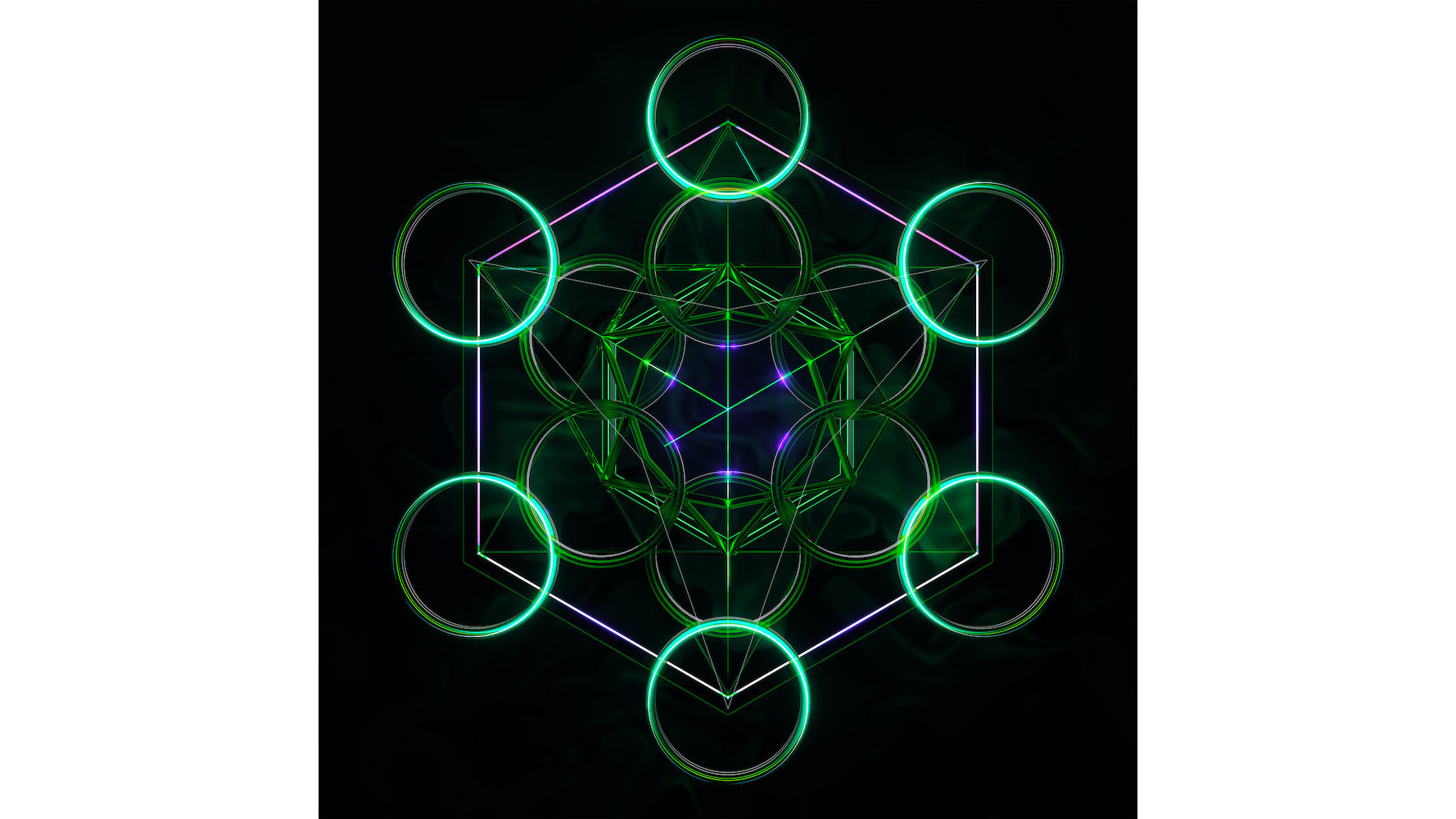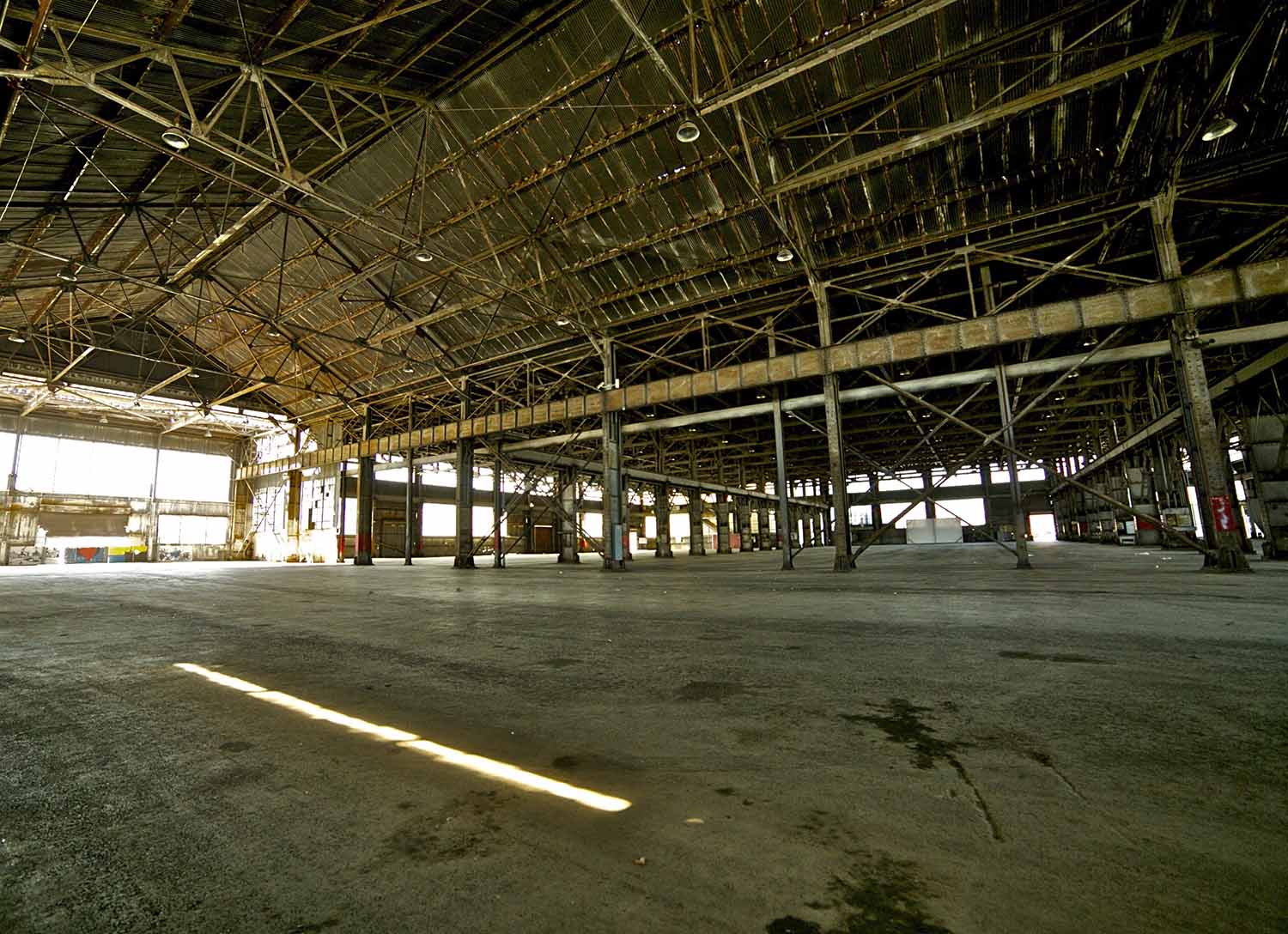Martine Syms, Mythiccbeing, 2018 and Threat model, 2018.
Installation view of “Uncanny Valley: Being Human in the Age of AI” at de Young Museum, San Francisco, 2020. © Martine Syms. Photography by Gary Sexton. Courtesy of Sadie Coles HQ, London / Los Angeles and the Fine Arts Museums of San Francisco.
Zach Blas, The Doors, 2019. Installation view of “Uncanny Valley: Being Human in the Age of AI” at de Young Museum, San Francisco, 2020. Photography by Gary Sexton. Courtesy of the Fine Arts Museums of San Francisco.
Simon Denny, Amazon worker cage patent drawing as virtual King Island Brown Thornbill cage (US 9,280,157 B2: “System for
transporting personnel within an active workspace”, 2016), 2019. Installation view of “Uncanny Valley: Being Human in the Age of AI” at de Young Museum, San Francisco, 2020. Photography by Gary Sexton. Courtesy of the Fine Arts Museums of San Francisco.
Ian Cheng, BOB (Bag of Beliefs), 2018-2019. Installation view at de Young Museum, San Francisco, 2020. Photography by Gary Sexton. Courtesy of the Fine Arts Museums of San Francisco.
Lawrence Lek, AIDOL, 2019. Installation view of “Uncanny Valley: Being Human in the Age of AI” at de Young Museum, San Francisco, 2020. © Lawrence Lek. Courtesy of the artist and Sadie Coles HQ, London / Los Angeles. Courtesy of the Fine Arts Museums of San Francisco.
Lynn Hershman Leeson, Shadow Stalker, 2019.
Installation view of “Uncanny Valley: Being Human in the Age of AI” at de Young Museum, San Francisco, 2020. Courtesy of the Fine Arts Museums of San Francisco.
Lynn Hershman Leeson, Shadow Stalker, 2019.
Installation view of “Uncanny Valley: Being Human in the Age of AI” at de Young Museum, San Francisco, 2020. Courtesy of the Fine Arts Museums of San Francisco.
Christopher Kulendran Thomas in collaboration with Annika Kuhlmann, Being Human, 2019. Installation view of “Uncanny Valley: Being Human in the Age of AI”, de Young Museum, San Francisco, 2020. Commissioned by the V–A–C Foundation. Courtesy of the artist and the Fine Arts Museums of San Francisco.
Christopher Kulendran Thomas in collaboration with Annika Kuhlmann, Being Human, 2019. Installation view of “Uncanny Valley: Being Human in the Age of AI”, de Young Museum, San Francisco, 2020. Commissioned by the V–A–C Foundation. Courtesy of the artist and the Fine Arts Museums of San Francisco.
Christopher Kulendran Thomas in collaboration with Annika Kuhlmann, Being Human, 2019. Installation view of “Uncanny Valley: Being Human in the Age of AI”, de Young Museum, San Francisco, 2020. Installation view at Ground Zero at Schinkel Pavillon. Photography by Andrea Rossetti. Courtesy of the Fine Arts Museums of San Francisco.
Agnieszka Kurant, A.A.I., 2017. Installation view of “Uncanny Valley: Being Human in the Age of AI” at de Young Museum, San Francisco, 2020. Courtesy of the artist; Tanya Bonakdar Gallery, New York and the Fine Arts Museums of San Francisco.
Forensic Architecture. Installation view of “Uncanny Valley: Being Human in the Age of AI” at de Young Museum, San Francisco, 2020. Courtesy of the Fine Arts Museums of San Francisco.
Trevor Paglen, They took the Faces from the Accused and the Dead… (SD18)”, 2019. Installation view of “Uncanny Valley: Being Human in the Age of AI” at de Young Museum, San Francisco. Photography by Gary Sexton. Courtesy of the artist; Altman Siegel Gallery, San Francisco; and the Fine Arts Museums of San Francisco.
“Uncanny Valley: Being Human in the Age of AI” has brought together some of the best of the current generation of contemporary artists engaging with artificial intelligence (AI). Curated by Claudia Schmuckli at the Fine Arts Museums of San Francisco, and organized in collaboration with the de Young Museum, this interactive exhibit offers a new way to look at AI.
In this show, the artists distance themselves from notions of imitation and resemblance that have long characterized the narrative around the relationship between men and machines. Rather, they reveal the problematic aspects of these interactions in a society that is increasingly a victim of overreliance on algorithms.
The “uncanny valley,” a hypothesis developed in 1970 by robotics professor Masahiro Mori and which analyzes the human emotional reaction to humanoids and robots that look almost human, is here revisited and tinged with darker notes. In an age when artificial intelligence has crept into many aspects of our existence, this uncanniness is now manifest in AI’s unnoticed movement through our lives.
The show raises more questions than answers, offering a visual translation of the new narrative that surrounds AI. While Agnieszka Kurant (Conversions 2, 2020) and Ian Cheng (BOB (Bag of Beliefs), 2018–19) critically approach the ways in which AI-based systems are designed and powered, tackling issues such as exploitation of human labor and collective intelligence, Simon Denny (Amazon worker cage patent drawing as virtual King Island Brown Thornbill cage, (US 9,280,157 B2: ‘System for transporting personnel within an active workspace,’ 2016), 2019) draws a connection between technological work and the potential ecological disasters connected to the fueling of our digital ecosystem.
The Zairja Collective, Psychepit #11 (amygdala)
from the Psychepit series, 2015-present. Collage of wireframe design for the geo-modeling of existing mining open pits / slice of mice brain with highlighted outreach of amygdala. 59 x 108 in.
Origin credit for brain imagery: The Allen Institute. Courtesy of the Fine Arts Museums of San Francisco.
The Zairja Collective, Neuropit #13 (visual cortex neuron) from the Neuropit series, 2016-present. Collage of wireframe design for the geo-modeling of existing mining open pits / visual cortex neuron of a mice. 63 x 48 in. Origin credit for brain imagery: The Allen Institute. Courtesy of the Fine Arts Museums of San Francisco.
Lawrence Lek, AIDOL,
2019. HD video, stereo sound. 85′. © Lawrence Lek. Courtesy of Sadie Coles HQ, London / Los Angeles. Courtesy of the Fine Arts Museums of San Francisco.
Lawrence Lek, AIDOL,
2019. HD video, stereo sound. 85′. © Lawrence Lek. Courtesy of Sadie Coles HQ, London / Los Angeles. Courtesy of the Fine Arts Museums of San Francisco.
Lynn Hershman Leeson, Shadow Stalker, 2019.
Installation view of “Uncanny Valley: Being Human in the Age of AI” at de Young Museum, San Francisco, 2020. Courtesy of the Fine Arts Museums of San Francisco.
Using the Unreal engine, Forensic Architecture generated thousands of photorealistic ‘synthetic’ images, situating the Triple-Chaser in approximations of real-world environments. Coloured ‘masks’ tell the classifier where in the image the Triple-Chaser grenade exists. Courtesy of Forensic Architecture; Praxis Films, 2019; and the Fine Arts Museums of San Francisco
Rendering images of our model against bold, generic patterns, known as ‘decontextualised images’, improves the classifier’s ability to identify the grenade. Courtesy of Forensic Architecture; Praxis Films, 2019; and the Fine Arts Museums of San Francisco.
Simon Denny, Document Relief 5 (Amazon Worker Cage patent), 2019.
Ink Jet Print on archival paper, glue, custom metal wall mount. 30 x 21 x 13,2 cm. Photography by Nick Ash. Courtesy of the artist; Altman Siegel, San Francisco; and the Fine Arts Museums of San Francisco.
Stephanie Dinkins, Conversations with Bina48, 2014-present. Video still. Courtesy of the artist and the Fine Arts Museums of San Francisco.
Zach Blas, The Doors, 2019. Installation view of “Uncanny Valley: Being Human in the Age of AI” at de Young Museum, San Francisco, 2020. Photography by Gary Sexton. Courtesy of the Fine Arts Museums of San Francisco.
Zach Blas, The Doors, 2019. Installation view of “Uncanny Valley: Being Human in the Age of AI” at de Young Museum, San Francisco, 2020. Photography by Gary Sexton. Courtesy of the Fine Arts Museums of San Francisco.
Trevor Paglen (They Took the Faces from the Accused and the Dead… (SD18), 2020) and Forensic Architecture (Model Zoo, 2020) focus on the consequences of misuse of AI-based technology, such as human rights violations. Hito Steyerl, instead, with The City of Broken Windows — an installation already exhibited at Castello di Rivoli in 2018 — investigates the impact of AI on areas such as social injustice and economic inequality.
Stephanie Dinkins (“Conversations with Bina48,” ongoing series) and Lynn Hershman Leeson (Shadow Stalker, 2019) center their works on gender, race, and identity, while the Zairja Collective draws visitors’ attention to the concept of mining at the level of both data and physical resources.
Finally, Martine Syms (Mythiccbeing, 2018), Christopher Kulendran Thomas with Annika Kuhlmann (Being Human, 2019), Lawrence Lek (AIDOL, 2019), and Zach Blas (The Doors, 2019) place importance on criticalities related to surveillance capitalism, corporate goals, and the distinction between human and artificial that is becoming progressively blurred.

